1. The dimness of the moon’s ash light is a result of the moon’s motion around the Earth and the Earth’s motion around the Sun, which determine the phases of the Moon. This information can be used to learn how to identify lunar phases and understand the conditions under which they occur.
2. The study of the moon’s ash light provides a valuable opportunity to explore concepts related to cause-and-effect relationships in the world around us and the potential for understanding and knowledge of our surroundings.
3. In addition to these scientific concepts, studying the moon’s ash light can also help develop important skills such as logical thinking and the ability to provide justification for statements and draw conclusions based on evidence.
Development Contents
1. The objective of this lesson is to demonstrate that the phases of the Moon are determined by the movement of the Moon around the Earth and the Earth with the Moon around the Sun. Students will also learn how to determine the lunar phases and the conditions under which they occur.
2. Another goal of this lesson is to introduce students to concepts related to the worldview, such as cause-and-effect relationships in the surrounding world and the knowability of the surrounding world.
3. Additionally, this lesson aims to develop students’ logical thinking skills and their ability to justify their statements and draw conclusions.
Topics covered in this lesson include moon phases, new moon, first quarter, full moon, last quarter, limbo, phase angle, terminator, synodic period, sideric period, lunar libration, and luminary coverage by the Moon.
The materials needed for this lesson include a computer, screen, projector, globe of the Earth, globe of the Moon, star map, and a model of the celestial sphere.
1. Setting lesson goals and objectives
2. Checking homework
3. Acquiring new knowledge
4. Reinforcement of acquired knowledge
5. Evaluation: “Movement and Phases of the Moon” Test
6. Assessment of students’ performance during the lesson
It is a well-known fact that the Moon undergoes various changes in its appearance. Since it doesn’t emit its own light, we can only observe the side that is illuminated by the Sun, known as the day side.
The Moon is Earth’s closest celestial object and its only natural satellite.
The Moon orbits the Earth in the same direction that the Earth rotates on its axis.
While moving across the sky from west to east, the Moon eventually catches up with and surpasses the Sun.
As the Moon completes its orbit around the Earth, its appearance goes through a series of changes known as lunar phases.
The limb refers to the visible edge of the Moon’s disk.
The terminator is the boundary line between the illuminated and unilluminated parts of the Moon’s surface.
Phase angle – refers to the angle formed between the directions from the Sun to the Moon and from the Moon to the Earth.
The phase of the Moon is determined by the ratio of the area of the illuminated portion of the Moon’s visible disk to its total area.
The Moon goes through four main phases: new moon, first quarter, full moon, and last quarter.
Create a diagram in your notebook illustrating the changes in lunar phases, as well as a table detailing the “Phases of the Moon.”
The time of day in which the Moon is above the horizon, as well as whether we see the hemisphere of the Moon facing the Earth as fully or partially illuminated, depends on the Moon’s position in its orbit.
New Moon marks the beginning of the lunar month.
The Moon occupies a position in the celestial sphere that is either above or below the Sun, and is oriented towards the Earth with its unlit side. This results in the Moon being invisible to the naked eye.
After a span of two or three days, the Moon becomes visible in the western sky during the early evening, taking the shape of a thin crescent with a bulge on the right side. This phase is known as the waxing moon.
Occasionally, it is possible to observe a faint glow known as the ashy light of the Moon.
The first quarter refers to the phase when only the right half of the lunar disk is illuminated by the Sun’s rays. Following sunset, the Moon can be found in the southern part of the sky and sets around midnight.
As the Moon continues to move eastward away from the Sun, it gradually becomes visible in the eastern sky during the evening. It sets later and later each day, with its setting time extending beyond midnight.
The beauty of the Moon is most evident during the full moon phase, when its surface reflects the sun’s rays back to the Earth at night. It is not surprising that in folklore and legends, the full moon is often associated with magical properties and its influence on earthly matters.
After a week, only half of the lunar disk becomes visible again, but this time it is the left part. This phase is known as the last quarter. The Moon rises around midnight and continues to shine until morning. By sunrise, the Moon can be observed in the southern side of the sky. In fact, we can even spot the Moon during the day in the southwestern part of the sky.
As the days pass, the width of the lunar sickle continues to decrease, and the Moon gradually moves closer to the Sun from the right side. Eventually, it becomes invisible once again.
The stages of new and full moons are known as sisigia derived from the Greek term “sisigia” which means “conjunction”.
From the new moon to the full moon, the Moon is referred to as young, as it gradually increases in size each day. From the full moon to the new moon, it is considered old, as it gradually decreases in size.
How can you differentiate between a waning moon and a waxing moon?
The general rule for the northern hemisphere is as follows: if the moon’s crescent shape resembles the letter C, then the moon is old. If you mentally draw a line to the left of the disk and see the letter P, then it’s a waxing moon.
Sidereal month – One complete revolution of the Moon around the Earth.
Synodic month – the time interval between successive phases of the Moon with the same name.
The synodic month is longer than the sideric month due to the Earth and the Moon orbiting around the Sun. After completing one orbit around the Earth in 27.3 days, the Moon returns to its original position among the stars. However, during this time, the Sun has moved eastward along the ecliptic. It takes an additional 2.2 days for the Moon to catch up with the Sun.
Let’s analyze the Moon’s visibility during different phases.
Since the Moon’s path across the sky is close to the ecliptic, the full Moon rises from below the horizon at sunset and follows a similar trajectory as it did six months ago.
In the summer, the Sun rises high in the sky while the full Moon remains close to the horizon.
In the winter, the Sun is low, but the Moon rises high in the sky, casting a long-lasting illumination on the winter landscapes and giving the snow a blue tint.
Although only one side of the Moon is visible from Earth, it still undergoes rotation on its axis.
An interesting experiment can be conducted with the Moon’s globe, where it is moved around the Earth’s globe in such a way that one side of the Moon’s globe always faces the Earth. The Moon’s revolution around its axis is equal to its revolution around the Earth.
Question: Does the Moon experience day and night?
For two weeks, there is daylight on one side of the Moon, while the other side experiences night.
It is worth noting that only a portion of the Moon’s surface that is visible from Earth, and it is slightly more than 50%.
The Moon’s inclination to the plane of its orbit and the preservation of its rotation axis direction in space result in the phenomenon known as latitude libration. The magnitude of this libration is approximately 6°50′.
Thanks to this libration, we are able to observe not only the visible side of the Moon from Earth, but also narrow strips of territory on its back side. In total, we can see approximately 59% of the lunar surface from Earth.
As the Moon orbits around the Earth, it periodically obscures various distant celestial objects with its disk. This phenomenon is called lunar occultation.
These moments of lunar occultation are calculated and utilized to further refine the parameters of the Moon’s orbit.
Occurrences of star occultations are more frequent than those of planet occultations.
Examine the photos to determine the current phase of the Moon and describe the conditions under which it is visible.
Review of the material covered:
What is the range of the Moon’s angular distance from the Sun?
How can the Moon’s phase give an estimate of its angular distance from the Sun?
By approximately how much does the Moon’s elevation change in a week?
What observations are necessary to observe the Moon’s motion around the Earth?
What observations indicate that the Moon experiences day and night?
Why is the Moon’s ashy light dimmer than the rest of the Moon visible shortly after a new moon?
Homework: Section 7, exercise 6.
Receive a certificate of publication immediately upon uploading your work

As soon as you upload your work, you will receive a complimentary publication certificate.
Introducing the Olympiad Series for Spring-Summer 2023

Teaching Materials Bundles

Experience high-quality instructional videos, comprehensive tests, and interactive workshops tailored to your needs.
Professional Development Webinars for Educators

Take part for free and have the chance to obtain a certificate for the webinar.

At night, recall all the most sorrowful and agonizing experiences to endure.
Avoid tossing words around, as they can suffocate individuals during the night…..
The purpose of night is to express what you can’t repeat in the morning.
Sometimes, the person who smiles during the day is filled with sadness at night.
In the quiet of the night, you dream more about the tender words of one person than the applause of thousands.
When you forget to call at night, I forget to sleep.
I detest that state of lying awake at night and endlessly pondering, pondering, pondering, pondering, pondering…..
A dreadful time of night – too late for yesterday, too early for today…..
When night falls, the human world appears to come to a standstill and surrender its dominance to an enigmatic enchantment. The streets slowly become deserted, the glow fades from the windows of houses and apartments. Only the lanterns dot the darkness, creating solitary islands of illuminated space. It is a time of romance, when beautiful statuses and phrases come to life. A time of enchantment.
When and where to spot the halo
The halo phenomenon is most commonly observed in Antarctica, particularly on its ice dome and slopes at elevations of 2700-3500 meters above sea level. These halo formations can be seen throughout the entire day and are known to change in shape and color. Strong winds in the area lift clouds of loose snow, which have a crystalline structure, into the air. The lower boundary of these snow clouds settles on the ground, creating the perfect conditions for halo formation. In the absence of snow clouds and under bright sunlight, there are numerous colored and white halos with radii of 22° and 46°, as well as other rarer phenomena.
When moist air cools, it often turns into crystallized, moisture-rich air. If large quantities of this moist air are transported in the upper atmosphere over the continent, the moisture condenses and crystallizes, resulting in frost falling. During the warm season, the ice crystals usually do not reach the surface of the earth and instead dissolve in the lower atmosphere, which saturates the air with moisture once again. As a result, the halo phenomenon is more likely to be observed on the continental part of the continents rather than near the coast.
In frosty weather, there are times when the halo forms near the Earth’s surface, causing the ice crystals in the air to sparkle like gems and intensify the glow of the halo. If the sun is low above the horizon, it is sometimes possible to see the lower part of the halo against the backdrop of the surrounding landscape.
The Unexplained Curvature of the Moon’s Surface
The Moon’s surface possesses an extraordinary curvature that defies explanation. Contrary to popular belief, the Moon is not a perfectly spherical body. Geologic studies have revealed that this celestial object is actually a hollow sphere. Despite this revelation, scientists are still perplexed as to how the Moon maintains its peculiar structure without collapsing.
One theory proposed by the aforementioned scientists is that the lunar crust is composed of a solid titanium framework. Indeed, extensive analysis of lunar crust and rocks has revealed exceptionally high levels of titanium. Russian scientists Vasin and Shcherbakov have even estimated that the thickness of this titanium layer is approximately 30 kilometers.
Sergey Yesenin – exquisite verses about existence, spirit, and affection
The poetry of the remarkable Russian poet Sergey Yesenin captivates everyone. Yesenin’s verses depicting the purpose of existence, an unsettled spirit seeking solace, or the adoration for a woman profoundly resonate with the poet’s admirers and poetry enthusiasts due to their heartfelt quality.
Sorrowful musings, profound musings, Acrimonious musings, burdensome musings, Musings, perpetually distanced from joy, Companions of my life of unhappiness!
Musings are the progenitors of sounds of anguish, Unhappy musings, cold musings, Musings are the fountains of tears of sorrow, Unrestrained musings, unrestrained musings!
Why do you torment my exhausted chest, Why do you obstruct my way? Why do you incite my shattered strength to battle once more against the obscurity?
You can’t keep the fire burning, the sparks have faded away… Too late, futile. You can’t mend your throbbing heart, your sick, lifeless, cold musings!
Give me a paw for good fortune, Jim. I’ve never seen such a paw. Let’s bark in the moonlight in the tranquil, silent weather. Give me a paw for good fortune, Jim.
Oh, my dear little bird, please refrain from licking me. Let’s explore together the most basic of concepts. You are unaware of the true meaning of life, you don’t grasp its immense value.
Your owner is both charming and well-known, and his house is always filled with guests. Every single one of them eagerly desires to stroke your soft, velvety fur.
You are incredibly attractive, my darling, with your innocent and trusting nature. And without any hesitation, just like a tipsy companion, you shower kisses upon us.
My beloved Jim, your visitors have been numerous and diverse. But has the quiet and melancholic one happened to pay a visit?
I am certain she will come. And in her eyes, without my presence, you will lick her hand, symbolizing all the things you are and all the things you are not responsible for.
Bright stars, celestial beings! What secrets do you hold, what mysteries do you conceal? Stars that possess profound wisdom, how do you enchant the soul with your immense power?
Frequent stars, nearby entities! What beauty resides within you, what strength do you possess? What celestial forces are at play, drawing upon vast knowledge?
And why is it that when you illuminate the night sky, you beckon me upwards, into your expansive embrace? Your gentle radiance touches my heart, Stars in the firmament, distant stars!
You have departed and will not return to me…
You have departed and will not grace my presence again, You have forsaken my corner And now find mirth in another’s company, Concealing your identity with a white handkerchief.
I am filled with sadness, ennui, and despair, My hearth burns uncomfortably, But a withered violet pressed within a book Reminds me of past happiness.
Share this article with your friends!
Beauty goes beyond reason
Beautiful places are not just something that nature offers to be mindlessly used. Beautiful places speak of the power of nature and should be acknowledged.
- Nature does not make errors.
- There is nothing comparable to nature, nothing more stunning than nature.
- Nature will never deceive a person who comprehends it.
- The foolish seek to conquer nature, while the intelligent seek to befriend it.
- The beauty of nature is visible to everyone, but not everyone realizes what they see.
- Actions against nature never result in good.
- The sounds of nature are a therapeutic silence. It heals better than doctors.
- The source of beauty on earth is nature. It serves as the foundation of art and culture.
- The love for nature, its beauty, and patriotism are instilled.
- Your behavior towards nature reflects the state of your soul.
- Man will never fully comprehend all the mysteries of nature, for it is akin to divinity.
- Water enhances the enchanting wonders of nature.
- If you seek flawless perfection, seek solace in nature.
- In nature, there is no superfluous commotion; everything is harmoniously balanced and provided for.
- Due to man’s limited understanding of the laws of nature, certain phenomena may seem erroneous to him.
- Nature creates beautiful places to bring joy to mankind.
- Every moment of pleasure derived from nature transcends the confines of the mind.
Folk beliefs connected with circles around the moon
In ancient times, great attention was paid to the appearance of a halo around the moon. Typically, such phenomena were considered to be bad omens.
These circles could signify disasters such as epidemics, famine, illness, and the downfall of kingdoms and political leaders. However, they could also bring trouble to ordinary people, especially peasants and artisans, as most of the omens associated with lunar circles predicted changes in the weather.
In the Russian collection “Kolyadnik” (a text from the 18th century, translated from Polish) which was widely circulated in Russia, the following weather changes were indicated:
- “If a circle appears around the moon in January, there will be heavy rainfall.”
- “If a circle appears around the moon in February, there will be a shortage of food.”
- If the month of April is encircled, there will be an abundance of fruit.
- If the month of July is surrounded, there will be a mortality of animals.
- If the month of August surrounds, there will be a plentiful supply of fish and honey.
- If the month of September surrounds us, there will be a scarcity of rain.
- If the month of October is encircled, it will be dry and there will be a scarcity of rain.
- If the month of November is surrounded, there will be a surplus of fat.
Refraction of the sun’s rays in the atmosphere gives rise to various optical illusions that can be observed from Earth with the naked eye. One of the most stunning phenomena of this nature is the solar halo. This phenomenon has numerous variations, each of which possesses its own unique beauty. However, the occurrence of any type of this optical illusion requires a specific set of conditions.
So, what exactly is a solar halo and why does it manifest? Let’s start by addressing the initial query. In essence, a halo is a vibrant rainbow encircling the sun. However, it distinguishes itself from the customary rainbow in terms of appearance and characteristics.
A solar halo emerges in the atmosphere when multiple factors align. It is commonly observed during frigid weather conditions with high humidity levels. An abundance of ice crystals is present in the air. As sunlight passes through these crystals, it undergoes refraction in a unique manner, resulting in the formation of an arc around the Sun.
It’s important not to mistake a halo for “solar crowns”. The latter refer to the hazy glows surrounding the Sun, the Moon, or other luminous sources – such as streetlights and floodlights.
When you look at a rainbow, you can often see all the different colors of the spectrum, ranging from red to purple. However, when it comes to a solar halo, it is usually only colored in shades of red and orange. The rest of the colors in the spectrum blend together, creating a white appearance. It is quite rare to witness a halo where all the colors of the spectrum are clearly distinguished. It truly is a remarkable sight.
Unlike a rainbow where the red spectrum is on the outer side, in a halo it is located closer to the center, which is where the Sun is.
The key distinction between rainbows and halos is that rainbows are formed due to the refraction of light in water droplets. These droplets consistently appear and act the same way in the atmosphere, with the only variation being their size. On the other hand, halos are created by the refraction of sunlight in ice crystals. These crystals can have diverse shapes and sizes, and they can move in various ways, such as hovering, descending, rotating, and so on. Consequently, there exists a wide array of solar halo types.
While it may be challenging to capture clear images of the stars in the presence of a visible moon, it is certainly not an impossible feat! Discover the techniques for achieving this in a single exposure. (As reported by Minefuyu Yamashita in Digital Camera Magazine)
Equipment used: EOS 5D Mark IV with EF16-35mm f/2.8L III USM lens, set at a focal length of 16mm. The exposure settings were manually adjusted to f/2.8 for a duration of 30 seconds, with an ISO sensitivity of 3200. The white balance was set to Tungsten. A tripod was also utilized for stability during the shoot.
Step 1: Which moon phase to capture – crescent moon
Surprisingly, the image displayed above might appear to be a complete moon, but it is actually a rising crescent moon! If you were to shoot on a night with a full moon, the stars would not be visible. The same applies to other moon phases with a more complete moon. If you wish to capture both the stars and the moon in a single shot, opt for a night with a crescent moon.
Full moon: Moonlight overpowers the stars
For more information on photographing the moon, visit: Exposure Tips and Tools for Photographing the Moon
Step 2: Capturing Photos with Limited Time – When the Moon is Close to the Horizon
To achieve sharper star images, consider taking photos when the moon is positioned at its lowest point in the sky. This will minimize the influence of moonlight on the overall exposure.
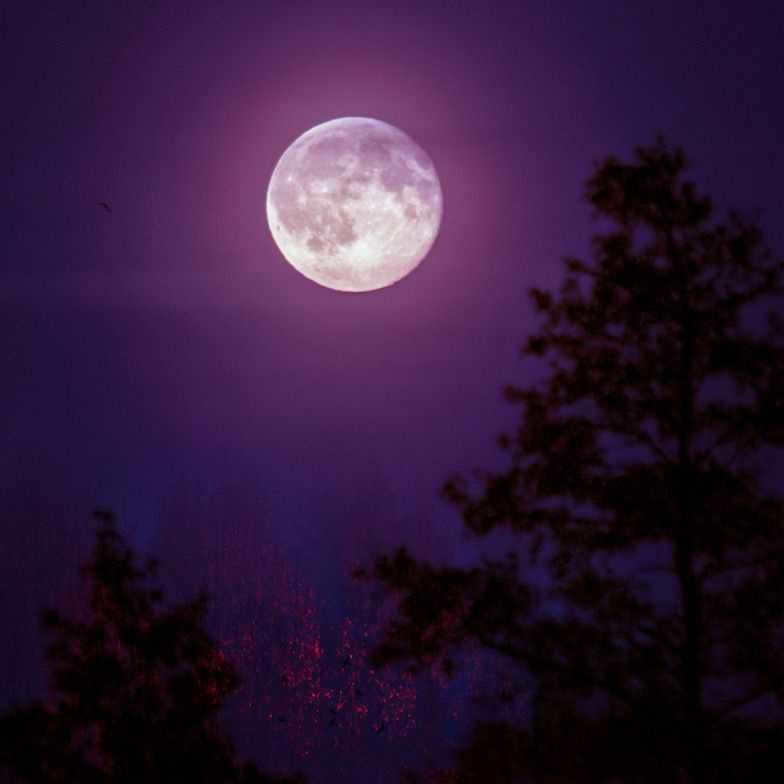
To achieve the stunning and serene blue tones in the primary backdrop, I commenced capturing images approximately one hour after the sun began to descend. I concluded my photography session prior to the moon’s descent. During sunset, the moon is positioned too close to the horizon, resulting in a reddish hue engulfing the strip of sky near the horizon.
Please take note: The crescent moon typically sets 2-3 hours after sunset.
30 minutes after sunset
As the sky remains illuminated 30 minutes after sunset, no stars are visible to the naked eye.
I ventured into the web of trees and bushes that flourished along the shoreline, diligently seeking branches with visually appealing silhouettes.
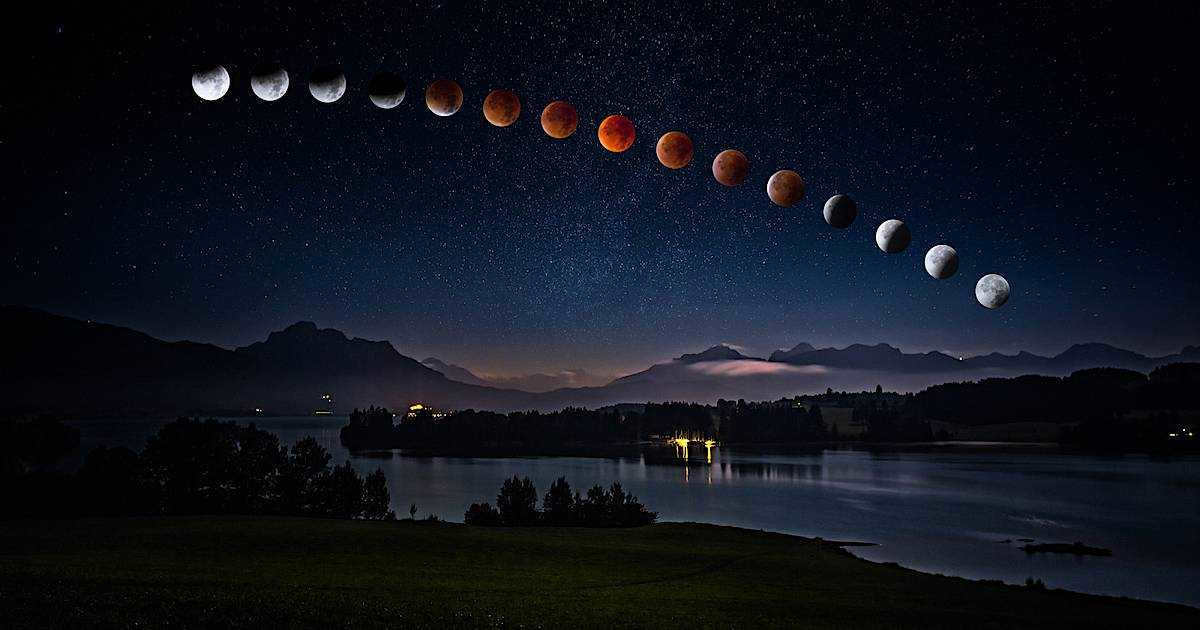
Hint: To avoid blurring silhouettes, wait for the wind to calm down before taking the photo.
Step 4: Adjust the exposure settings – 30sec; slightly brighter
I opted for a 30-second exposure to capture the stars’ elongation. (This is based on the rule of 500.)
To prevent the tree branches from blending into the darkness, I adjusted the ISO sensitivity to make the exposure slightly brighter.
This unintentionally caused the crescent moon’s highlights to blur, giving it the appearance of a full moon. However, in this case, it works well to enhance the night sky and create a more impactful image.
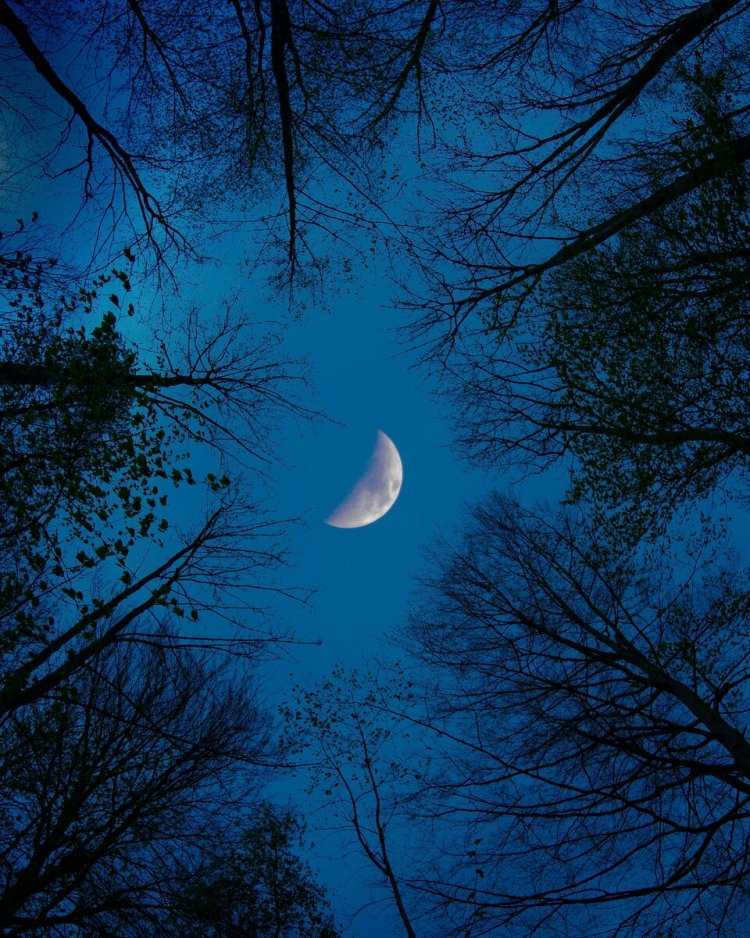
Tips:
– If your camera is equipped with a shutter speed timer feature (which is found in most intermediate and advanced models), make sure to utilize it to its fullest potential.
– To prevent any potential camera shake, try using the self-timer, touch shutter, or remote switch functions to release the shutter. Another option is to use the Live View remote shooting function available in the Canon Camera Connect app.
– The Live View remote shooting function can also come in handy if your camera or remote switch does not have a timer feature.
Using Live View Remote Shooting on Camera Connect
When in manual exposure mode, simply press the shutter-release button (which is indicated in red) to initiate the exposure.
The display will indicate “Shooting” and the elapsed time will be shown by an “A”. If you choose to use the manual exposure timer function, the exposure will automatically end after the set time has passed. Otherwise, press the stop button (“B”) to end the exposure.
Looking for more tips and tricks on capturing stars and celestial bodies? Check out these articles: Avoiding Mistakes in Astrophotography Techniques for Astrophotography with the EOS R Capturing a Lighthouse in Different Lighting Conditions Composition Techniques for Creating a Large Moon Transforming Stars into a Meteor Shower with Slow-motion Photography
If you’re serious about astrophotography and considering what equipment to add to your collection, here are some options:
The Canon EOS Ra: Capturing the Beauty of the Night Sky with an Astrophotography-Focused Camera
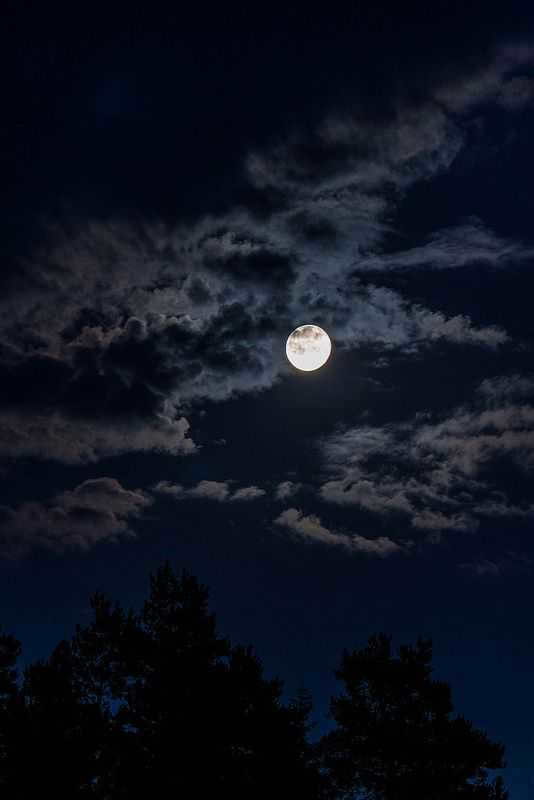
Enhance your astrophotography with a fast wide-angle lens: Astrophotography: Achieve stunningly clear images of the starry skies with the f/1.4 EF35mm f/1.4L II USM. This top-quality lens with a constant focal length will revolutionize your astrophotography experience.
Capture even more of the sky with Fisheye Lenses: EF8-15mm f/4L Fisheye USM is my go-to lens for capturing breathtaking starscapes.
(Stay tuned for RF mount versions of these lenses!) Get the latest updates on photography news, tips, and tricks.
Join the SNAPSHOT community.
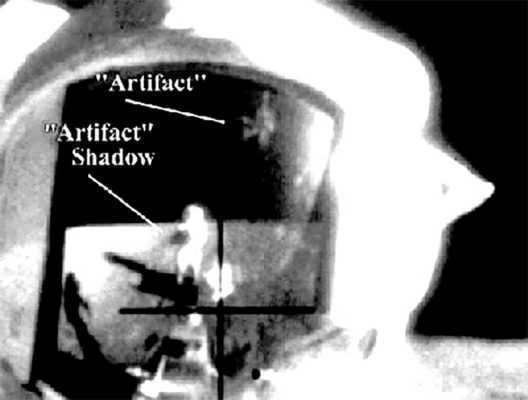
One of the most iconic photographs from the second Apollo mission is captured in this image. Astronaut Pete Conrad skillfully snapped a shot of his fellow astronaut, Alan Bean, while they were both standing on the moon’s surface. A fascinating detail in the photo is the reflection of Conrad in Bean’s helmet, adding an extra layer of depth to the image. Additionally, the foreground of the reflection reveals various instruments and equipment, providing a glimpse into the work being done during the mission.
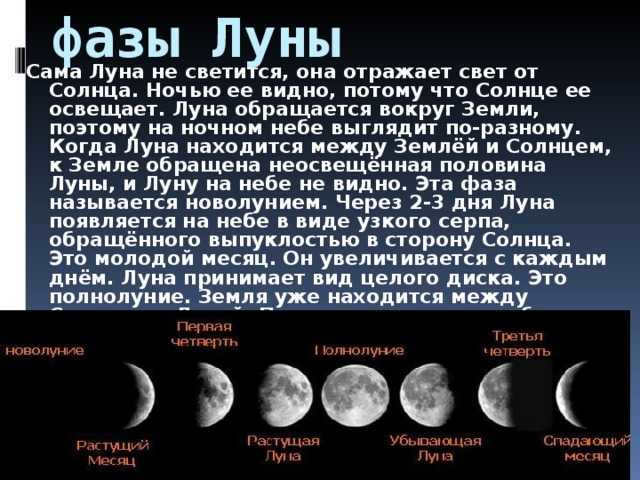

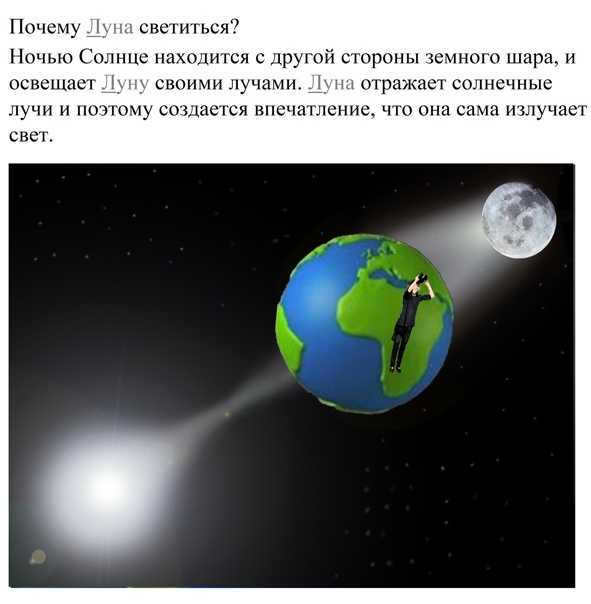
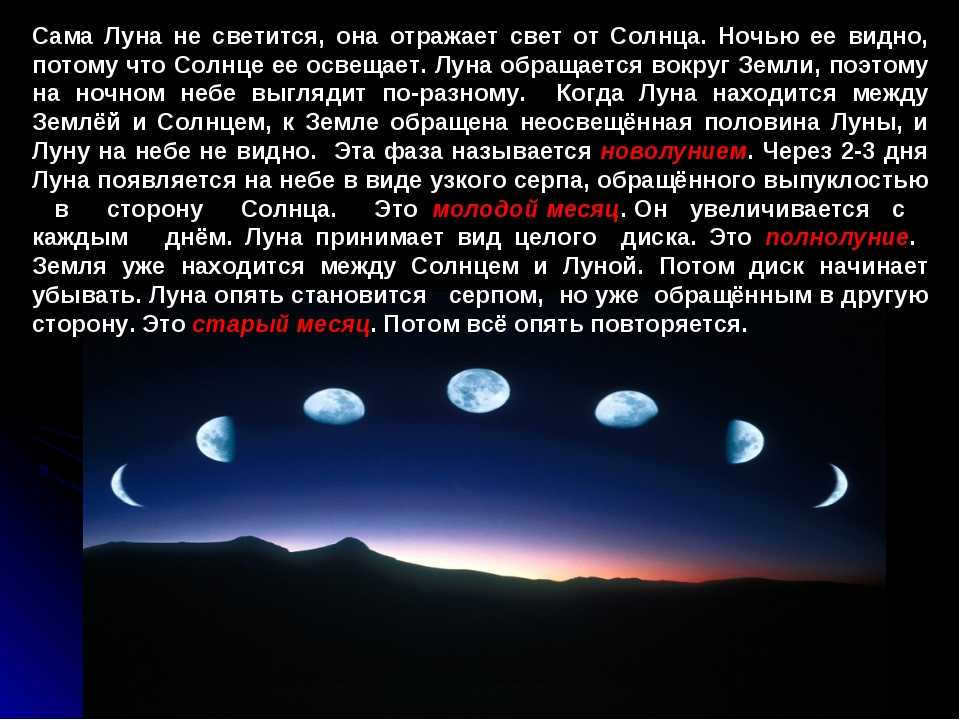
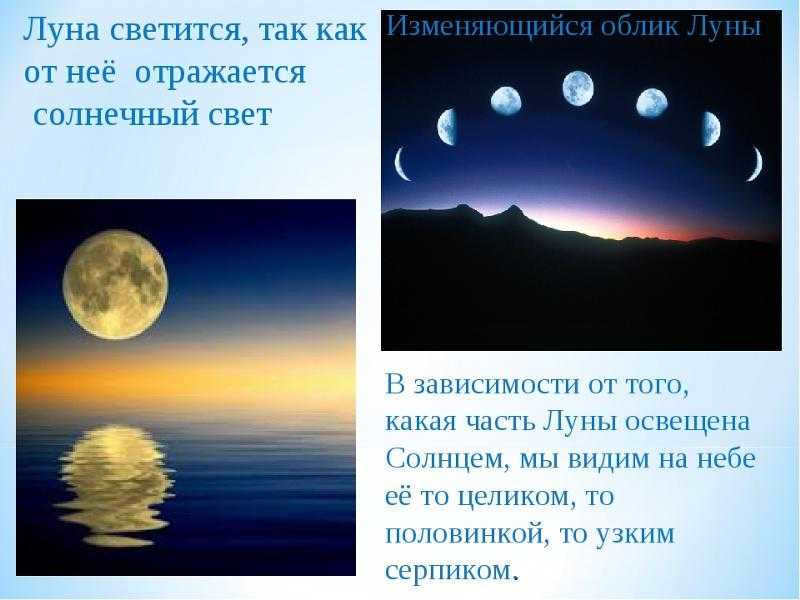
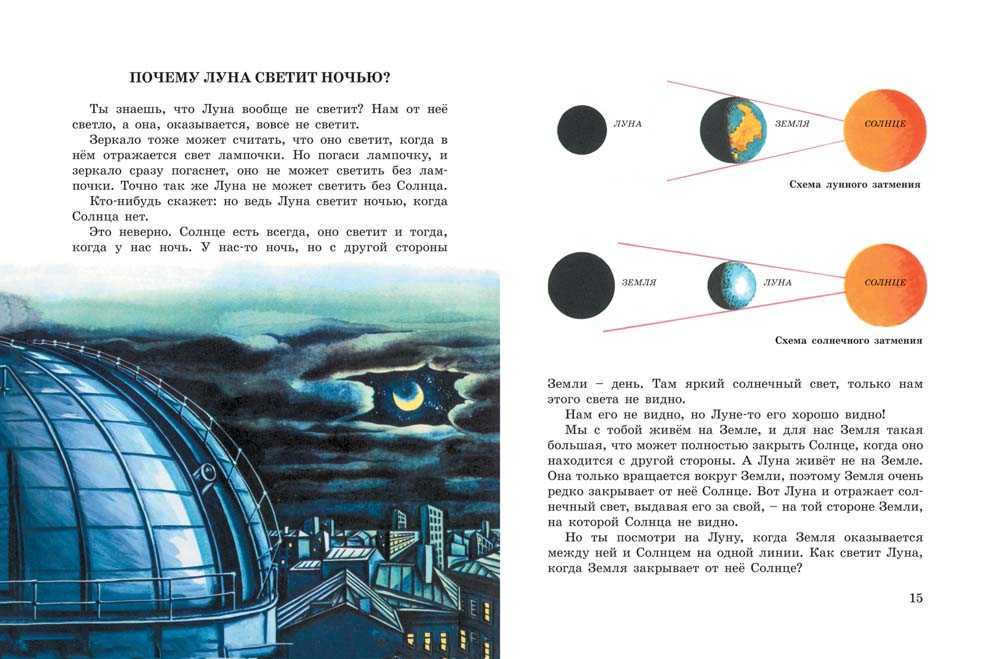
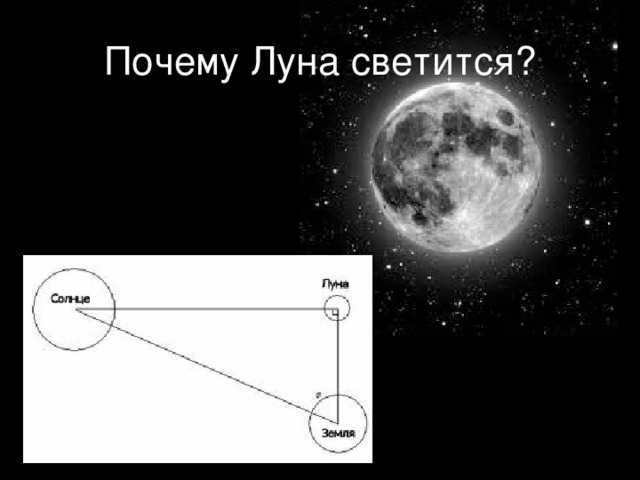
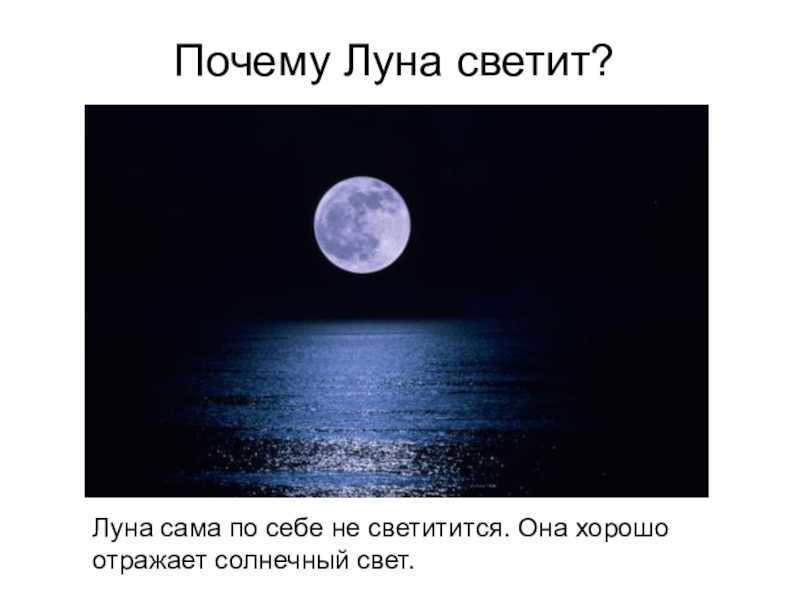

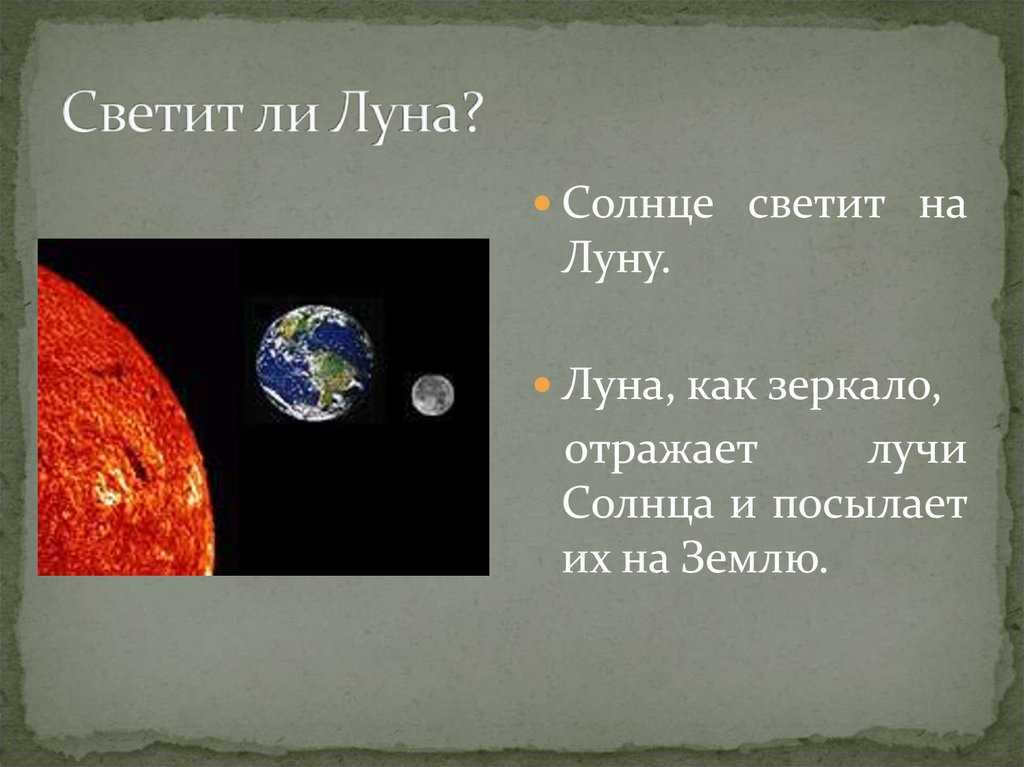
So, NASA, what was it exactly? Was it perhaps just a prank?
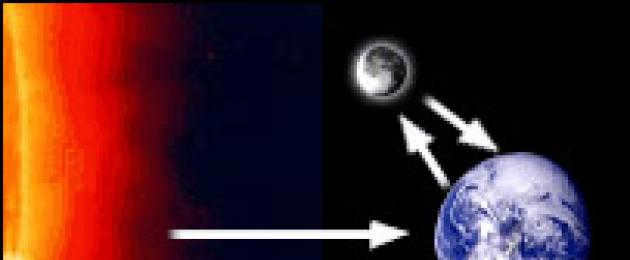
Leonardo da Vinci was the first to provide an explanation for the phenomenon known as ash light. He recognized that this effect occurs when light reflected from the Earth illuminates the unlit portion of the Moon that is not directly exposed to sunlight. However, even da Vinci, the visionary artist and thinker, could not have anticipated the intriguing discoveries that could be found within this ashy glow. One such discovery is the potential presence of signs of life.
The Moon, with its fluctuating brightness ranging from ashy to radiant, has given rise to the legendary narrative of the rebirth of the Phoenix bird.
Philip Goode, the director of the Bear Solar Observatory in Big Bear, California, highlights the significance of the Moon’s ashy light in accurately determining the Earth’s albedo (reflectivity).
According to Goody, variations in Earth’s albedo (which can be detected by changes in ash light) are connected to alterations in cloud coverage, and the thickness and extent of the cloud layer rely on the planet’s temperature.
Consequently, by examining the luminosity of the non-illuminated side of the Moon, we can gain insights into how the Earth is responding to global warming: the greater the presence of clouds, the more energy is reflected back into outer space and less reaches the Earth’s surface.
Nevertheless, it is not only the reflective properties of the Earth that are of interest to scientific research, but also those of other planets.
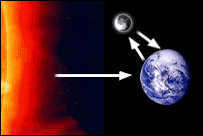
The Moon reflects the light emitted by the Earth, creating a faint glow known as ash light.
By analyzing not only the energy characteristics of this reflected light, but also its spectral composition, we can gain valuable insights about the Moon. It is reasonable to assume that within the spectrum of Earth’s reflected light, we may discover evidence of water, methane, oxygen, and other substances that indicate the presence of active life. This line of reasoning prompted Wesley Traub, a senior scientist at NASA who specializes in studying planets beyond our solar system, to apply similar methods in his research.
It is true, as Traub argues, that the presence of these substances in the spectrum can only serve as indicators of life and cannot provide definitive conclusions. However, Traub remains hopeful that NASA will see the need to incorporate the study of reflected light into the Terrestrial Planet Finder program, which aims to search for Earth-like planets beyond our solar system.
Contrary to Traub’s pessimism, Professor Pilar Montañés-Rodríguez from the New Jersey Institute of Technology disagrees. In her recent research, she successfully detected even small amounts of chlorophyll in the spectrum of Earth’s pale light, leaving no doubt that life is thriving.
Undoubtedly, the idea of detecting traces of chlorophyll in a spectrum millions of light years away may seem highly questionable. However, Montanez-Rodriguez presented her findings at the American Geophysical Union symposium, revealing that she had conducted a series of experiments under her guidance for a year. These experiments aimed to simulate the collection of data on Earth’s reflected light. Subsequently, the collected results were compared to the capabilities of the technique.
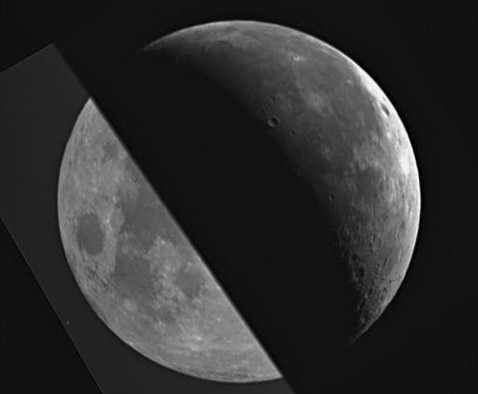
The illumination reflected from the Moon’s surface is considerably weaker compared to the solar light (as seen in the superimposed frames). However, the information regarding the faint lunar light holds greater significance in the quest for extraterrestrial life.
“Modern instruments are becoming increasingly capable of detecting distant planets. If a planet possessing these characteristics were discovered, the presence of chlorophyll traces in its spectrum would be highly unusual and would not go unnoticed. Unfortunately, the angular distance between remote planets and their stars is minuscule, making it challenging to differentiate their light from one another,” explains Prof. Montanez-Rodriguez.
For now, we can only hold onto the hope that researchers from various disciplines will join forces and collaborate on the investigation of the reflected light emitted by exoplanets. With any luck, these combined efforts will yield the desired outcomes in the near future.
Ashen light of the moon– A fascinating phenomenon in which we perceive the Moon in its entirety, despite only a portion of it being illuminated by the Sun. During this occurrence, the unilluminated portion of the Moon’s surface takes on a distinct ash-colored hue.
This phenomenon is typically observed shortly before and after the new moon, specifically during the beginning of the first quarter and at the end of the last quarter of the lunar phases.
The Moon’s surface that is not directly illuminated by sunlight is illuminated by sunlight scattered by the Earth and then reflected back to the Earth by the Moon. Therefore, the path of the Moon’s ash light photons is as follows: Sun -> Earth -> Moon -> the eye of an observer on Earth.
The bright crescent is the part that is directly illuminated by the Sun. The remaining part of the Moon is illuminated by light reflected from the Earth.
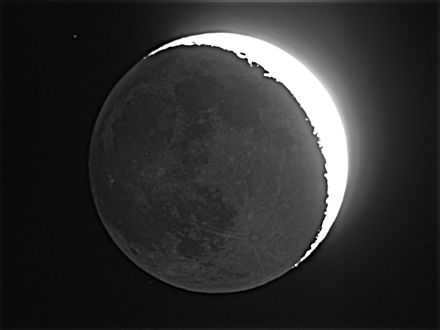
The origin of this phenomenon has been widely understood since the era of Leonardo da Vinci and Mestlin, who was Kepler’s instructor and provided the initial accurate explanation for the glow of the ash. Mestlin’s explanation was documented in 1604 within Kepler’s Astronomiae pars optica, while Leonardo da Vinci’s explanation, which predated it by a century, can be found in his manuscripts.
In 1850, the French astronomers Arago and Logier conducted the first instrumental comparisons between the brightness of the ash glow and the crescent Moon.
Notes
Wikimedia Foundation . 2010 .
Discover the meaning of “Ash light of the Moon” in different dictionaries:
The dim radiance of the lunar surface that is not directly illuminated by the Sun and is facing the Earth (caused by sunlight reflected off the Earth and then off the Moon) … Large Encyclopedic Dictionary
The faint glow of the unilluminated part of the lunar surface facing the Earth (caused by sunlight reflected off the Earth and then off the Moon). * * * * * * PEPEL LIGHT OF THE MOON PEPEL LIGHT OF THE MOON, the faint glow of the Sun’s unlit portion of the… … Encyclopedic Dictionary
A dim illumination of a portion of the Moon’s visible surface that is not directly exposed to sunlight; observed during new moons, when the Moon appears as a thin crescent. This phenomenon, known as Earthshine, occurs when the Sun’s rays are reflected off the Earth and then onto the Moon. -The Big Soviet Encyclopedia
A faint glow originating from the dark side of the Moon, caused by the reflection of sunlight off the Earth… Astronomical Dictionary
A subtle luminosity emitted from the non-sunlit area of the Moon’s surface that faces the Earth, resulting from the sunlight being reflected off the Earth and then off the Moon itself… Natural History. Encyclopedic Dictionary
Ashen, ashen, ashen. 1. adj. resembling ashes (rare). Ashen mass. 2. Grayish-gray, smoky (in terms of color). Ashen hair color. Ashen hair. “The flickering candlelight and the pale faces of the guests appeared ashen to him.” A.N.Tolstoy. Ashen light… Ushakov’s Explanatory Dictionary
After the sun has set behind the horizon, one can catch a glimpse of the slender crescent shape of a young moon on Sevastopol Avenue in Moscow. It displays its curved side to the sun, signaling the beginning of a new lunar phase. Shortly afterwards, the moon will continue its ascent, gradually revealing more of its illuminated surface. As the moon progresses through its phases, different portions of its disk become visible, culminating in a full moon where the Earth, Moon, and Sun align. This phenomenon grants us the opportunity to witness the entire disk of the moon in all its celestial glory. For more information, you can visit the Moon’s entry on Wikipedia.
PHASES OF THE MOON – (also relevant to Mercury and Venus). The moon’s journey begins shortly before the new moon and extends beyond it. During the first quarter, half of the lunar disk becomes visible, and at the full moon stage, the Earth, Moon, and Sun align perfectly, allowing us to see the entire disk of the moon. For further details, the Astrological Encyclopedia offers valuable insights into the celestial phenomena surrounding the moon and other celestial bodies.
Explanation of the pale light of the Moon. – During clear evenings in early spring, when the young Moon is observed in the shape of a narrow crescent on the western horizon, it is not difficult to notice that the rest of the Moon appears to be illuminated with a much fainter light compared to the crescent. This subtle illumination is commonly referred to as the pale light or ash light of the Moon. The phenomenon of ash light is also clearly visible in the autumn, towards the east.
The reason behind this phenomenon has been well understood since the time of Leonardo da Vinci and Mestlin, who was Kepler’s mentor and provided the first accurate explanation of the ash light. Mestlin’s explanation was published in Kepler’s Astronomiae pars optica in 1604, while Leonardo da Vinci’s explanation, which was given a century earlier, can be found in his manuscripts.
This is the accurate explanation for the lunar glow. As straightforward as it may seem, it took humanity countless centuries of studying celestial bodies to discover it.
Prior to Leonardo da Vinci and Mestlin, various theories were put forth to explain the lunar glow. Some attributed it to the Moon’s phosphorescence, while others (such as the ancient philosopher Posidonius) believed it was due to the Moon’s transparent composition. The renowned astronomer Tycho Brahe, from the 16th century, proposed that the lunar glow was caused by the illumination of its surface by the planet Venus.
Exploring the Phenomenon of Ash Light
The study of ash light offers a unique opportunity to compare the brightness of the Earth when illuminated by the Sun with the brightness of the Sun itself. Interestingly, the bright sickle and ash light of the Moon are actually different parts of the same celestial body, with one being illuminated by the Sun and the other by the Earth. By measuring the ratio of brightness between the sickle and ash light, scientists can determine the ratio of brightness between the Sun and the Earth. Essentially, this allows us to view our own planet from the perspective of the Moon.
The first instrumental comparisons of ash light and the Moon’s sickle were conducted in 1850 by French astronomers Arogo and Logie. However, there was a gap of 60 years before new studies on ash light emerged, with recent works focused on this intriguing phenomenon appearing only within the last 2 years.
The American astronomer Veri conducted a series of comparisons between the brightness of ash light and that of the sickle in 1911 and 1912. Based on these comparisons, as well as the measurements taken by Arogo and Logie, Veri arrived at a fascinating and significant conclusion regarding the reflection of sunlight by Earth. It was discovered that Earth reflects light to an extent no less than that of Venus, which surpasses all other planets in this regard.
It is a well-known fact that Venus never displays any distinct and clear features. The spots visible on Venus are always very faint and indistinct. This leads to the conclusion that Venus is consistently covered by thick clouds that obscure its surface from our view.
Veri’s research suggests that when observed from space, our Earth bears a striking resemblance to Venus. Just like Venus, the Earth conceals its surface from view, shrouded in a protective layer of atmosphere and clouds.
Unveiling the hues of ash.
A few years ago, I embarked on a project to investigate the color of ash light through photography, with the aim of gaining insights into the visual appearance of our planet from outer space. To undertake this endeavor, I commenced capturing
Various light filters were used to capture photographs of the ash light and the sickle in different colors, including red, yellow, green, and violet. Each plate features a long exposure of the ash light, accompanied by multiple short exposures of the sickle taken at different durations. The exposure settings for the sickle were carefully selected based on preliminary experiments, ensuring that each plate also captured sickle images with the same brightness as the ash light. This series of plates provided a means to determine the relative brightness of the ash light compared to the sickle in various colors. Consequently, it became possible to make a comparison between the color of the Earth and the color of the Sun. It is worth noting that the ash light represents the Moon illuminated by the Earth, while the bright sickle represents the Moon illuminated by the Sun.
Assuming that the brightness of the sickle is the same in all wavelengths, I have obtained the following relative brightness values for ash light in different colors, with violet rays serving as the reference point.
From this table, it is clear that the ash light is twice as bright in violet rays compared to red rays when compared to the sickle. Moreover, the brightness consistently increases as it passes through the yellow and green rays.
Based on this information, we can infer that when viewed from space, the Earth appears to have a bluish hue.
This inference naturally leads us to the idea that our atmosphere plays a significant role in reflecting light into space, potentially contributing to the bluish color of the Earth. With this in mind, let us briefly discuss the scientific explanation for the blue color of our sky.
The explanation behind the sky’s blue hue.
In an 1871 publication and subsequent ones, Lord Rayleigh, an English scientist, put forth a comprehensive and rigorous theory regarding the blue color of the sky. According to his theory, this particular hue is a result of light being scattered by air molecules and suspended foreign particles. When the diameter of these particles is significantly smaller than the length of light waves, the amount of scattered light is inversely proportional to the fourth power of the wavelength. As an example, the wavelength of extreme violet rays is two times smaller than that of extreme red rays, resulting in the former being scattered 16 times more intensely than the latter.
As the size of the particles increases, the dispersion of different colored rays becomes more uniform, resulting in a whitish hue for the sky. This color change occurs as we approach the horizon, where we can see the lower portions of the atmosphere containing relatively larger particles such as dust and smoke.
Furthermore, when the particle diameters exceed the wavelength, all colors of light are equally separated, resulting in a completely white color, similar to the color of clouds. By examining the light reflected by the Earth using Lord Rayleigh’s theory, we can categorize it into two components: (1) the light reflected by clouds and large particles in general, and (2) the light scattered by the air itself and particles with diameters smaller than the wavelength.
By applying the least squares method to the ash light brightness values in different rays mentioned above, we have obtained the following outcomes:
Based on the last statement, it is evident that the observations align very well with the theory. It is apparent that the scattering of light by the air itself (component 2) plays a significant role in the light emitted by the earth into space. This component is not very noticeable in the red rays, but it starts to increase rapidly and already surpasses component 1 in the violet rays. The constituents of these components are equivalent in the blue rays.
Therefore, the Earth’s hue is a combination of the typical azure of the atmosphere blended with a substantial amount of pure light; in simpler terms, the Earth appears as a markedly whitish sky. When observing the Earth from outer space, we would perceive a disk displaying the aforementioned shade, with minimal visibility of the planet’s actual features. A significant portion of the solar spectrum that reaches the Earth is dispersed into the expanse of space by the atmosphere and its various pollutants before it can reach the Earth’s surface. Furthermore, the portion of light that is reflected by the Earth’s surface experiences a significant reduction in intensity due to additional scattering in the atmosphere.
S.S. Galperson was also involved in researching the color of Moon’s ash light at the observatory of the Russian Society of Amateurs of World Science in Petrograd. His research confirmed the presence of violet rays in the ash light, which I previously reported (see “Izvestiya Russk. Astr. Obshchestvo”, No. 9, 1914).
Upon investigation, we have discovered that the pale glow of ash emanates from the moon being illuminated by the light reflected by our atmosphere and all the particles suspended within it.
It follows, then, that if the overall reflectivity of the atmosphere were to undergo any changes, the brightness and hue of the ash light would necessarily be altered.
The fact that the reflectivity of our atmosphere is undergoing changes is evident from multiple pieces of evidence. The changes in atmospheric reflectivity over specific locations are easily noticeable and are influenced by factors such as cloud cover, air transparency, and other meteorological conditions. While these changes may offset each other in certain places, they do not always do so. There are entire months characterized by either excessive cloudiness or exceptional clarity, encompassing vast expanses of the Earth’s surface. Additionally, there are periods when the entire atmosphere becomes tainted with volcanic or even celestial dust, resulting in unusually bright suns. All of these factors contribute to a shift in the overall reflectivity of our atmosphere, which, like a mirror, should be reflected in the luminosity and color of moonlight. This highlights the importance of systematically observing the moon’s ash light. Through the analysis of ash light, we are able to gain insights into how our Earth appears from outer space.
Very F.W. Astronomical News. № 4696.
Leonardo Da Vinci discovered this occurrence nearly five centuries ago. He understood that both the Earth and the Moon reflect the light from the Sun. We are able to see the illuminated portion of the Moon from the Earth, but even when the Sun goes down on the Moon’s horizon (which occurs once every lunar day – equivalent to 29.5 Earth days), the Moon’s surface continues to receive a slight amount of illumination from our planet since the Earth never completely disappears below the horizon on the visible side of the Moon, except in the most extreme libration points where the Earth, in its wobbling motion, appears and disappears below the horizon. These specific areas on the Moon emit a faint, ethereal light, which is known as ash light.
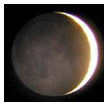
The unique positioning of the Moon and Earth results in them always being in “antiphase”, meaning that when we observe the crescent Moon, the Earth appears in the same phase but is already waning when viewed from the lunar surface. It’s not hard to imagine that the brightest illumination of the Moon occurs near the new moon, when the Earth appears as a full or nearly full multicolored white-greenish-blue disk in the lunar sky. This Earth disk is four times larger than our own full Moon and shines fifty times brighter.
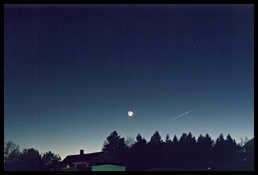 |
It is recommended to observe the glow of ash near the new moon because as the moon’s phase progresses, the brightness of the sunlit side will increasingly overshadow the glow of the dark side. However, when using a telescope, it is possible to easily observe the ash glow near the lunar quarter or even during larger phases.
In order to witness this phenomenon with the naked eye, it is advisable to wait until the autumn season, when the waning moon is clearly visible, or even better, in the spring season when the young crescent moon is high in the sky on warm and clear evenings. To understand why this is the case, continue reading.
In the most recent issue (No. 4 for 2002) of the renowned Russian magazine “Science and Life,” readers were informed about a fascinating discovery made by French astronomers. By studying the spectrum of ash light, these astronomers found two key pieces of information. Firstly, they discovered that the dominant tones in the spectrum are blue, which is not surprising considering that Earth is often referred to as the “blue planet.” Secondly, they noticed that the spectrum lacks light with a wavelength shorter than 725 nanometers. The reason for this is that Earth’s vegetation absorbs these wavelengths during the process of photosynthesis. As a result, our forests and meadows can be seen from great distances in space.
The authors of this discovery believe that this phenomenon could potentially be used to search for signs of plant life on other planets.
In addition, researchers at the Canadian Great Bear Lake Solar Observatory have made an intriguing discovery regarding the Earth’s albedo, or reflectivity. Their findings indicate that the highest level of sunlight reflection occurs during the months of April and May. This correlation can be attributed to the varying cloud cover throughout the year, as clouds play a significant role in light reflection. When compared to other elements, such as oceans and the Earth’s surface, clouds reflect approximately half of the light that falls upon them. In contrast, oceans reflect only 10% of sunlight, while the Earth’s surface reflects between 10% and 25%. It should be noted that snow and ice have an even higher reflectivity, but their impact is limited by factors such as cloud cover and the relatively small surface area covered by these elements.
Therefore, during the final two months of spring, the luminosity of the Moon’s ash will be approximately 10% brighter than the yearly average. However, its brightness can fluctuate on an hourly basis due to the Earth’s rotation, and these fluctuations can reach up to 5%. This phenomenon is once again attributed to the unevenness of the Earth’s surface. For instance, the Pacific Ocean typically reflects half to three times less light than the continent of Asia, especially when there are more clouds over the land.
// NASA, Meteoweb/Skywatching
It is common for authors of science fiction novels or short stories to depict the Earth as seen by brave adventurers on the Moon. In these stories, the native Earth often appears as a green disk. But is this portrayal accurate? Is it possible to determine the color of our planet from the Moon, and see what the lunar explorers would see?
It appears that it is possible to achieve this. In order to do so, one must investigate the hue of the faint glow emitted by the Moon, known as the ash light. This is the light that permeates the entire Moon when its brightest section takes on the shape of a thin crescent.
I became intrigued by this inquiry due to the fact that the ash light originates from the Moon being illuminated by the Earth. The absence of an atmosphere surrounding the Moon allows for an unaltered reflection of the Earth’s light. Hence, by examining the color of the ash light, we can ascertain the color of the Earth as observed from the Moon.
The hue of the brilliant crescent Moon is determined by the Sun’s hue, which is modified by the reflective properties of the lunar surface. The hue of the ashen glow, on the other hand, is influenced by the Earth’s hue, which is also altered by the Moon’s surface. By comparing the hue of the ashen glow to that of the bright crescent, we are essentially comparing the Earth’s hue as seen from the Moon to the Sun’s hue as seen from the same vantage point.
To address this inquiry, I utilized a Bredikhin astrograph to capture images of the bright crescent Moon and the ashen glow of the Moon across various points in the spectrum, ranging from red rays to the beginning of ultraviolet rays. This was achieved by employing different types of photographic plates and employing different light filters.
I managed to divide the illumination of the planet Earth into two distinct components: the illumination that is reflected by clouds and large particles in general, and the illumination that is scattered by the air and small particles. It turned out that the scattered illumination plays a very significant role in the light that is emitted by the Earth into outer space. While it may be less noticeable in the red wavelengths, it is much more pronounced in the violet light compared to the illumination reflected by clouds. Both components of the Earth’s illumination are equal to each other when it comes to blue wavelengths.
As a result, the color of the Earth is a fusion of the typical sapphire hue of the sky with a substantial amount of white light. To put it simply, when seen from the Moon, the Earth appears to have a predominantly whitish sky color. If we were to observe the Earth from space, we would perceive a pale blue disk and have a hard time discerning any specific details on the Earth’s surface itself.
A significant portion of the sunlight that reaches the Earth is dispersed by the atmosphere and its various impurities before it reaches the Earth’s surface. Additionally, the sunlight that is reflected by the Earth’s surface undergoes further weakening due to atmospheric scattering.
If the overall reflectivity of the atmosphere changes, the brightness and color of the scattered light will also change. The reflectivity of the atmosphere is influenced by factors such as cloudiness, air transparency, and local conditions. These changes may offset each other in different locations, but not always.
There are extended periods of exceptional cloudiness or clarity that span large areas of the Earth’s surface. Occasionally, the entire atmosphere is contaminated by volcanic ash, leading to particularly vibrant sunsets.
All of these factors alter the reflectivity of our atmosphere, resulting in changes to the brightness and hue of the Moon’s ashen glow. This is why it is important to conduct systematic observations of the Moon’s glow.
The Da Vinci glow is a phenomenon where the entire surface of the Moon appears visible, even though only a thin crescent is actually illuminated by the Sun. In this case, the visible portion of the Moon appears in a vibrant yellow hue, while the remainder is cast in an ashen color. This is why it is also referred to as the Moon’s ash-colored light.
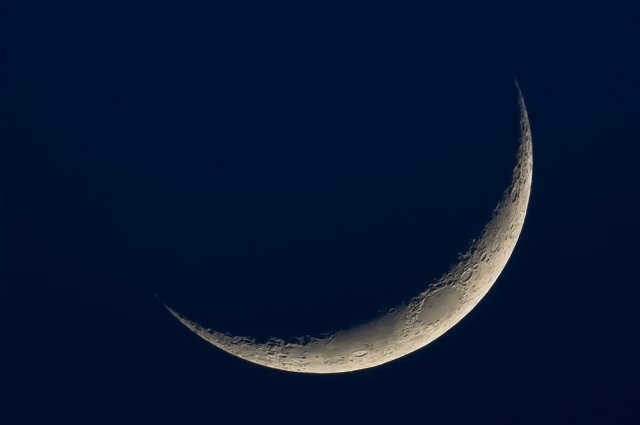
This incredible occurrence takes place when beams of sunlight reflect off of the Earth, illuminating the hidden side of our lunar satellite that is typically unseen.
When is the da Vinci glow visible?
The dimly lit side of the Moon during this celestial phenomenon is usually observable before and after the new moon, assuming clear weather conditions. Prior to the waxing phase, it is best to view the glow before dawn, while after the phase it is most visible at sunset. During this time, the Moon is positioned closest to the horizon. No special equipment is necessary to witness the glow, as it can be seen with the naked eye.
The closest occurrence of the Da Vinci glow can be witnessed from May 21 to 23 in the western section of the sky one hour after sunset.
What other names are given to this rare celestial phenomenon?
The da Vinci Glow has sparked the imagination of viewers, resulting in various poetic monikers, such as:
– The embrace of the old month by the new.
How did the lunar glow come to be associated with Leonardo da Vinci?
The ethereal radiance emitted by the Moon’s surface is not coincidentally known as the Leonardo da Vinci Glow. It is attributed to the pioneering artist, explorer, and inventor Leonardo da Vinci, who over 500 years ago was the first to provide an explanation for why the entire Moon can emit light at night, even when only a portion of it is illuminated by the Sun.
Throughout many centuries, humanity has observed the dim radiance of the Moon, with a prominent crescent moon shining brightly. Until the 16th century, the cause of this phenomenon remained unexplained. However, Leonardo da Vinci was the first to propose that the surface of the satellite is illuminated by sunlight reflected from the Earth. He arrived at this conclusion in the 1500s, a time when most people were unaware that the Earth orbited the Sun. Copernicus’ theory was not published until 1543, while da Vinci’s discovery was documented in his Leicester Codex.

What is the Leicester Codex?
The Leicester Codex is a collection of scientific notes by Leonardo da Vinci, covering various natural phenomena. It was written in Milan between 1506 and 1510 and is considered one of the artist’s most important scientific works. The codex earned its name in 1717 when it was acquired by the Earl of Leicester.
This manuscript is comprised of 18 double sheets of paper, each measuring 29 by 22 centimeters. The pages are densely written on both sides, resulting in a 72-page notebook. Each page contains approximately a thousand words, accompanied by mathematical calculations, diagrams, and illustrations in the margins.





